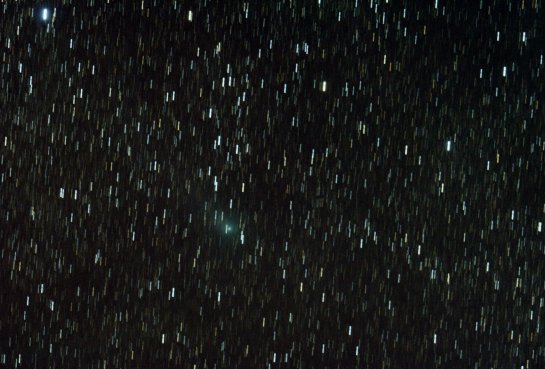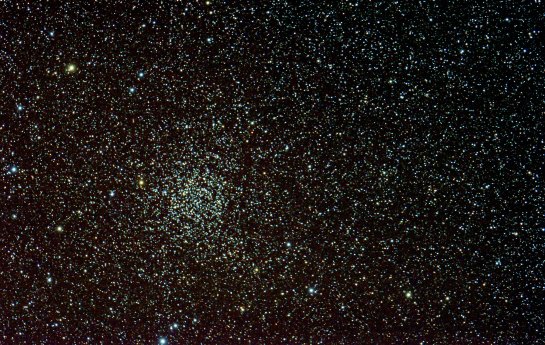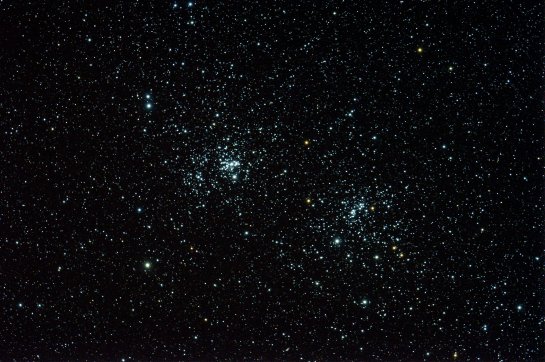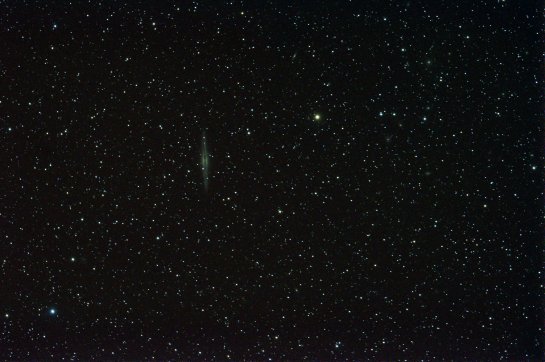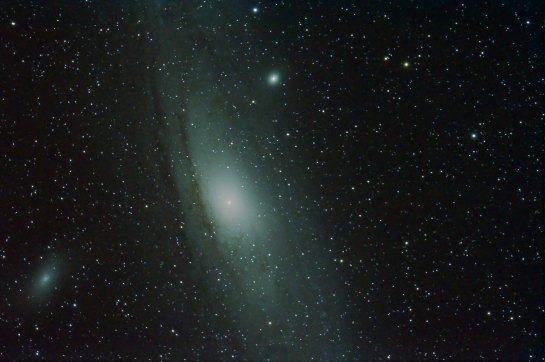The forecast for the night of the 26th of September looked very promising, so I packed the car and set off for my Tebay Road site about at about 7.30 pm. Full darkness was due at 9pm, so that would give me half an hour to drive and set up, plus a full hour for fine tuning the polar alignment. It still needs practice.
Sadly the clouds had other ideas, and after a frustrating couple of hours trying to polar align through cloud gaps – in anticipation of clearing skies later – I decided to cut my losses and pack up shortly after 10pm. Of course, that’s when the skies started to clear, in a tempting, optimistic kind of way, so I unpacked and started again from scratch.
From 11pm onwards, there followed about three hours of good conditions, occasionally excellent, in which I took about a hundred and twenty frames of various objects. Afterwards, while the camera sat in the back of the car taking dark frames for calibration, I sat at the telescope eyepiece and manually calibrated the mount’s Periodic Error Correction system.
Good to be out under a clear dark sky!
First up, an attempt at Comet C/2014 E2 (Jacques), discovered in early March this year and now moving away from the Sun at about 32 kilometres per second (71,461 mph) at the time of writing. Elevated 40º above the southern horizon, it makes a challenging target at Mag 10.0, given its distance of 175 million kilometres from Earth. That part of the sky “moves” fastest, accentuating the slightest misalignment of the mount, so I restrict the exposure of each frame to just 45 seconds and push the ISO to 3200. Here is the comet against half an hour of star movement:
Not my best comet photo to date, but it’s something. Processing out the star movement:
With the comet in the bag, I look to the zenith for promising targets. 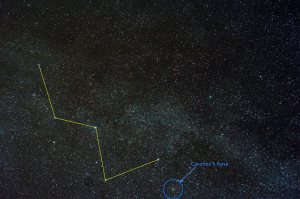 There have been a few to look forward to recently, and I am tempted by NGC 7789, a beautiful looking star cluster in Cassiopeia known as “Caroline’s Rose”. It was discovered by William Herschel’s sister Caroline in 1783, and I have only seen it before in my wide-field photos of Cassiopeia.
There have been a few to look forward to recently, and I am tempted by NGC 7789, a beautiful looking star cluster in Cassiopeia known as “Caroline’s Rose”. It was discovered by William Herschel’s sister Caroline in 1783, and I have only seen it before in my wide-field photos of Cassiopeia.
Through the telescope, the camera’s field of view is only 1.68º x 1.12º and the cluster is indeed a beauty. This shot is slightly cropped from full frame:
Between Cassiopeia and Perseus, the “double cluster” is next, NGC 869 and NGC 884:
Then a very challenging edge-on spiral galaxy in Andromeda, NGC 891, showing angular size of only 11.7 x 1.6 arc minutes and Mag 9.9. This galaxy is about 30 million light years away:
With the telescope in the region of Andromeda, it would be wrong not to take a peek, wouldn’t it? Even with minimal processing, the Andromeda galaxy M31 makes a very big impression through the telescope and deserves a full session to itself on another night.
